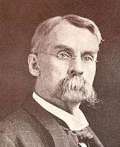Use of Repertory By James Tyler Kent
As Homeopathy includes both science and art, Repertory study must consist of science and art.
The Scientific method is the mechanical method; taking all the symptoms and writing out all the associated remedies with gradings, making a summary with grades marked, at the end.
There is an artistic method that omits the mechanical, and is better, but all are not prepared to use it. The artistic method demands that judgment be passed on all the symptoms, after the cases is most carefully taken. The symptoms must be judged as to their value as characteristics, in relation to the patient; they must be passed in review by the rational mind to determine those which are stage, rare, and peculiar.
Symptoms most peculiar to the patient must be taken first, then those less and less peculiar until the symptoms that are common and not peculiar are reached, in order, from first to last.
These must be valued in proportion as they relate to the patient rather than to his parts, and used instead of ultimates and symptoms pathognomonic.
Symptoms to be taken:
First-are those relating to the loves and hates, or desires and aversions.
Next-are those belonging to the rational mind, so-called intellectual mind.
Thirdly-those belonging to the memory.
These, the mental symptoms, must first be worked out by the usual form until the remedies best suited to his mental condition are determined, omitting all symptoms that relate to a pathological cause and all that are common to disease and to people. When the sum of these has been settled, a group of five or ten remedies, or as many as appear, we are then prepared to compare them and the remedies found related to the remaining symptoms of the case.
The symptoms that are next most important are those related to the entire man nd his entire body, or his blood and fluids: as sensitiveness to heat, to cold, to storm, to rest, to night, to day, to time. they include both symptoms and modalities.
As many as these as are found, also, in the first group, the mental summary, are to be retained.
There is no need of writing out the remedies not in the mental group or summary; these symptoms, relating to the whole patient, cannot be omitted with any hope of success.
We must next look over all the record o as certain which of heat group are most similar to the particulars of he regions of the body; of he organs of the body; of the parts; and of the extremities.
Preference must be accorded to discharges from ulcers, from uterus during menstruation, from ears and from other parts, as those are very closely related to the vital operation of the economy.
Next must be used the modalities of the parts affected, and frequently these will be found to the very opposite of the modalities of the patient himself. A patient who craves heat for his body, many require cold o his head, to his stomach, or to the inflamed pats, hence the same rubric will not fit him and his pa Hence to generalize by modalities of isolated particulars leads to the incorrect remedy or confounds values placed upon certain remedies.
There are strange and rare symptoms, even in parts of the body, which the experienced physician learns are so guiding that they must be ranked in the higher and first classes.
These include some keynotes which may u me safely to a remedy or to the shaping of results, provided that the mental and the physical generals do not stand contrary, as to their modalities, and therefore oppose the keynote-symptoms.
Any remedy correctly worked outs, when looked up in the Materia Medica, should be perceived to agree with, and to fit, the patient; his symptoms; his parts; and his modalities. It is quite possible for a remedy not having the highest marking in the anamnesis to be the most similar in image, as seen in the Materia Medica.
The artistic prescriber sees much in the proving that cannot be retained in the Repertory, where everything must be sacrificed for the alphabetical system. The artistic prescriber he becomes in artistic effects and Materia Medica work.
Must study Materia Medica long and earnestly to ramble him to fix in his mind such images, which, when needed, will in fill the sick personalities of human beings. These are too numerous and too various to be named or classified. I have often known the intuitive prescriber to attempt to explain a so-called marvellous cure by saying: “1 cannot quite say how I came to give that remedy We have heard this, and left it, and seen it, but who can attempt to explain it? It is something that belongs not to the neophyte, but comes gradually to the experienced artistic prescriber.
It is only the growth of art in the artistic mind: what is noticed in all artists. it belongs to all healing artists, but if carried too far it becomes a fatal mistake, and must therefore be corrected by Repertory work done uneven the most mechanical manner.
The more each me one restrains the tendency to carelessness in prescribing and in method, the wiser he becomes in artistic effects and Materia Medica work. The two features of prescribing must go hand in hand, and must be kept in a high degree of balance, or loose methods and habits will come upon any good worker.


